If you’ve wondered whether it’s safe in Medellin, Colombia, you’re not alone.
Worrying about safety in Colombia has been a common thought process for decades – and not just for tourists, either. Even native Colombians have to deal repeatedly with Medellin’s unsafe reputation.
Imagine what it’s like to arrive at an airport and watch as someone checks your Colombian passport. Imagine them saying, in a slow voice of recognition:
“Your name is Pablo? And you’re from Medellin? Please come this way for a moment…”
That’s what Pablo, our Medellin tour guide, has had to deal with multiple times in his twenty six years. Pablo is an electronic engineer by trade but studied in Budapest, worked in France and continued to travel the world until he eventually realised how Colombia is often seen through other people’s eyes.
Of course, Pablo has nothing to do with the city’s most infamous resident, other than sharing his first name. And from the moment we started our Medellin walking tour through the city, Pablo was quick to point out that this wasn’t going to be a Pablo Escobar tour.
In fact, it was everything but.
My first introduction to Medellin, Colombia
Thanks to decades of civil war combined with Pablo Escobar’s horrifically violent drug cartel, Medellin was once known as the most dangerous city in the world. Although it’s improved drastically over the last few years, there’s still an undercurrent of threat and seediness running through the streets. Pickpocketing is rife, prostitutes throng at the entrance to churches and there are still a multitude of gang wars with imaginary lines and boundaries that mustn’t be crossed.
Conversely though, the city is also becoming a foreigner’s haven, as more and more travellers arrive, find themselves somewhere wonderful and decide never to leave.
With this in mind, I went for a long-haul stay in Medellin; a full seven nights in one hostel, and a stretch that’s guaranteed to garner various outcries of ‘Oh, you’re here for a while then!’ from other travellers. It’s something I’ve noticed on the backpacker trails of various countries; any stay longer than three or four days is somewhat ‘overdoing it’ in the eyes of many.
But I had a long list of plans for Medellin. I wanted to get quite a bit of writing work done; to meet up with some bloggers who’ve made the city their home for the time being; do a bit of volunteer work; and then there was the crowning glory – Feria de Las Flores, an eight-day city-wide festival that just so happened to be occurring throughout my entire stay.
Totally accidental, but wonderfully appropriate nonetheless.
Read more: Everything I know about backpacking in Colombia
After spending a month in Colombia, I’m well aware of the draw this country has. Far from the violence it’s still remembered for, Colombia boasts gorgeous weather, stunning beaches, unbelievable scenery, an apparent love of festivals – and it’s also home to some of the most friendly and generous people.
So thanks to an overabundance of flowers adorning every spare surface of Medellin for the annual Feria de las Flores festival, the entire city was in high spirits. The festival made it just that bit easier to strike up impromptu conversation with Colombians; something that, as I get more confident with my Spanish, I find myself more and more compelled to do.
The benefits of speaking another language
Wandering the orchid gardens and getting caught in the rain meant an hour long chatting session with a elderly Colombian teacher and her three friends, all of whom loved the fact I kept writing down their suggested vocabulary for “storm”, “thunder” and “I’m getting very cold.” And while watching the vintage car parade, the stout lady in front of me kept grabbing my hand in joy whenever we spied a particularly attractive driver in the procession of cars that passed in front of us.
All because I made the concerned effort to actually talk in Spanish, without minding if I got a few words wrong; something I never thought I’d actually feel comfortable doing.
Read more: Challenging myself to become fluent in Spanish in South America
So it was seriously impressive to walk throughout the city and listen to Pablo speak nonstop for almost four hours, as he relayed the events of Medellin and Colombia’s history – all in a language he wasn’t born speaking.
But Pablo had a bigger agenda on his mind than just relaying a slice of Medellin’s history. He wants to make sure that we understood why Colombia is a place that needs to be explored: that Colombia is safe for tourists to visit. The people here have been through so much hardship, but have still come out the other side with smiles on their faces.
And why?
Because there’s an overwhelming sense of change in Colombia, and in Medellin particularly.
An increase of safety in Medellin Colombia
Known the world over as Escobar’s hideout city just twenty years ago, Medellin has undergone a total overhaul, complete with new buildings, public spaces and an all-new transport system. The latter meant Medellin was awarded the World’s Most Innovative City of 2012, thanks to a cable car that runs from the heart of the city all the way into the mountains – and still costs only $1 per ride.
As Pablo proudly announces, it means the poorest of Medellin’s residents can live in the favelas on the mountain outskirts, but still make their living in the city.
One of the central public squares of Medellin used to be an unpleasant area filled with drug dealers, squatters, prostitutes and thieves – and the Edificio Carré was right at the centre of it all.
“For us, it represented a building of bad things, of drug abuse, of fear, of a place you did not want to even be close to. I was very scared to come here when I was a child,” Pablo said, sadly. “It was a place that held many bad memories for me.”
But thanks to the renovation of the city, the plaza has a new name – Parque de las Luces. And that same dilapidated, criminal-filled building, which could have been turned into a McDonalds or a Subway? It’s now the city’s Centre for Education.
It drives the point home that most long-term changes in Medellin are going to stem primarily from education.
And that worryingly heavy military presence that Colombia is so often reported to have?
Well, there are still soldiers thronging the streets – but the horde of army personnel I saw emerging from a convoy of trucks were making their way to a music recital in celebration of Feria de las Flores.
Soldiers clutching trombones and clarinets clattered past me in full uniform, their guns lying dormant at their hips.
Meeting Botero’s ‘Pájaro de Paz’ statue. Twice.
But the place that most affected me in Medellin was at our last stop of the tour, as darkness was truly starting to descend upon the city.
We walked across the empty plaza in Parque San Antonio, shadowy trees dotted along the edges. My somewhat weak eyes made out two statues that looked oddly similar in shape, but not in construct.
Two birds: both satisfyingly chunky Botero statues, both with robust bodies and solid wings made out of bronze. But while the bird to the right was happily contented, the one on the left was missing something.
Missing a lot, actually. The bird’s chest was completely blown out, as if from an explosion.

Pablo gestured to our tour group, and we gathered in a circle around the bird on the left.
“In January 1995, this plaza was like the others in the city. It was a place filled with people, and where children came to play. One day in January, someone left a backpack below this statue here,” – he pats the seemingly solid concrete – “and it exploded. This bird became a weapon; catapulting shards of metal across the plaza. Many people were injured. Twenty three people were killed.”
Pablo pointed to a plaque, attached to the concrete block the statue sat upon.
“Look at this name, here.”
Lina Marcela Taborda Herrera. Aged just seven years old.
“I was the same age as her, but I wasn’t in the square that day, so I’m alive and she isn’t. Such different lives, only because of where we happen to be at a given moment.”
He paused, allowing his words to take effect.
“After the explosion, people stopped coming to Parque San Antonio. And the government decided to tear down the exploded sculpture – it was a bad memory, and surely something that needed to be forgotten.”
But one day, there was a phone call. “There is no way you’re taking down that statue!” The official on the other end of the line was confused. “Sorry, who is this?” he said. “This is Botero. The artist. My bird stays where it is.”
Botero’s sentiment was echoed by the rest of the city, too. While the burning intensity of some memories do need tuning out, there are others that need to remain in the public consciousness. And Botero’s next action was what clinched it; he erected a new bird beside the old, to sit happy and whole once again.
“This is my Medellin, right here – the broken and the new.”
And as Pablo spoke, his vehemence echoing across the wide and empty plaza, a little girl crept silently between the legs of the new bird. Casual, comfortable, and not in any danger.
Obviously there are still vestiges of the old and dangerous Medellin that are very prevalent. The Pájaro de Paz is huge testament to that.
“But you know what we do with those bad memories? We switch them off. And instead, we take those little happy memories, and we turn them up. We won a stage of the Tour de France and everybody celebrated for days. When we drew 1-1 in a football match with Germany? The entire country went crazy. I still get chills when I watch the goal on YouTube.”
And as for the Feria de Las Flores?
“It’s a silly festival, celebrating something silly. But we do it, and we love it, because it gives us hope. The chance to rejoice over something positive, and put happiness and beauty in the limelight.”
Is Medellin safe to visit in 2019?
Medellin made my head spin, in so many ways. The city prompted such an array of experiences and emotions for me that it’s actually rather hard to condense them into words.
But I think my biggest takeaway from spending time here was the utter beauty of the Colombian people. There’s a reason why so many foreigners fall completely in love with the place and never leave.
And I was ultimately inspired by Pablo’s clear passion for his country, and his city. He’s so proud to be from Medellin, and so was every other person I met. They’re proud of their history, in all its difficulty and hardship, because it’s what’s shaped them into the city they call home today.
But if it’s given a few more years to expand and grow, I hope that Medellin will be even more of a popular destination – not just because of its dark past, but in its own right.
Have you been to Medellin? Did you feel safe in Colombia?
NB: Pablo works tirelessly on his Medellin walking tour, and spends at least two days every week doing them completely for free (although there was no way I wasn’t going to tip him at the end of it!).
If you’re in Medellin I highly suggest you explore the city with him on a Real City Tour – and say hi from me!

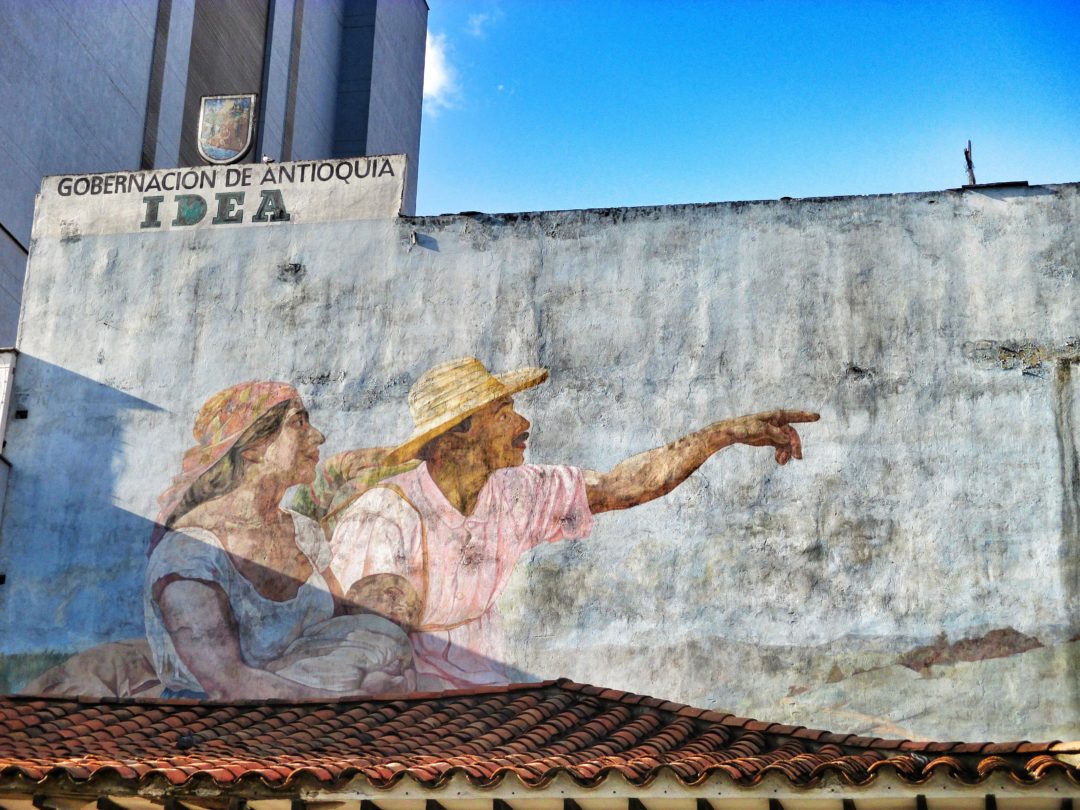
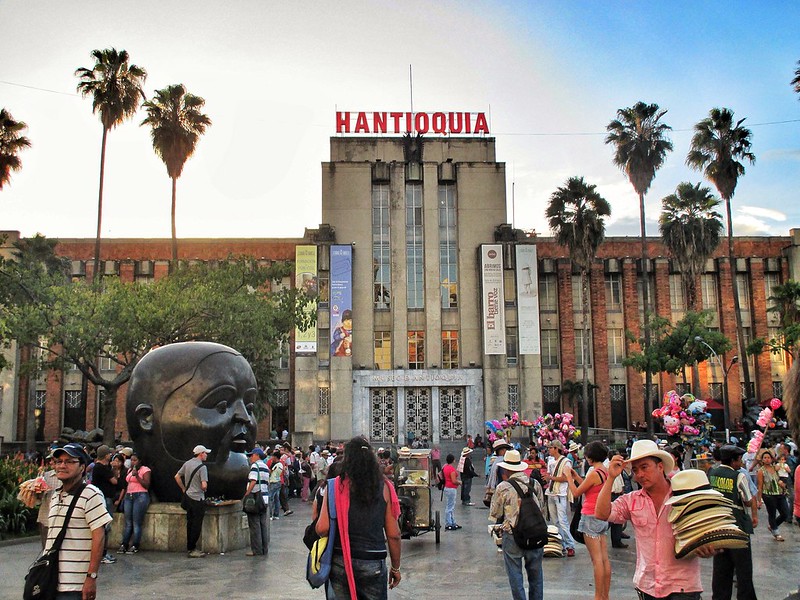









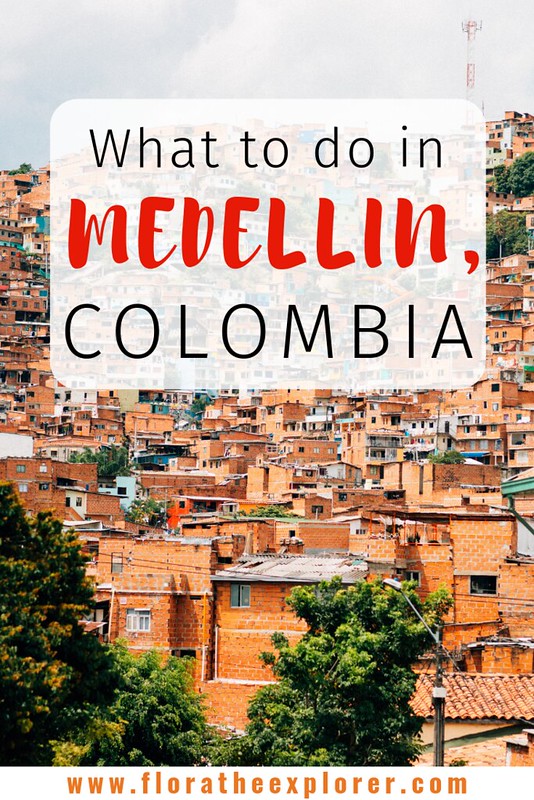
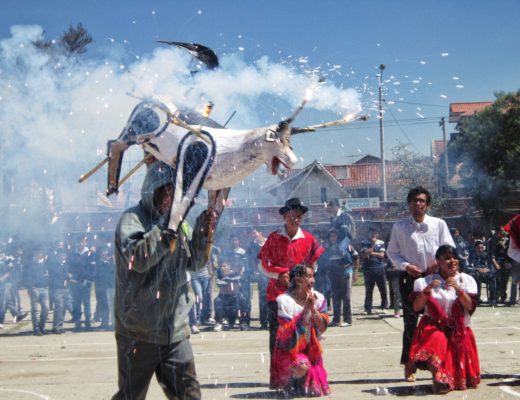
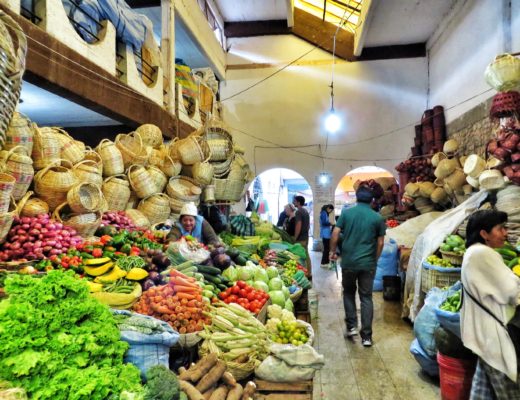
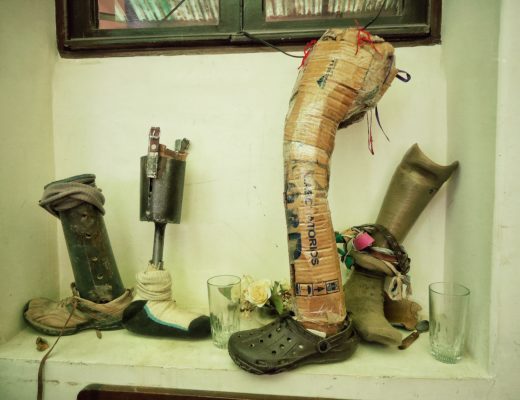
35 Comments
Britany
August 23, 2013 at 10:38 amI adored Medellin as well, and wound up spending a whole month there at the start of my South America trip! My one regret about starting my trip in Medellin though is that my Spanish was still pretty weak. You hit the nail on the head about people form Colombia — they are some of the most passionate and friendly people I’ve ever met as well, and I wish I had been able to speak better Spanish to allow for more conversation when I was there! I’m not too worried though, because I’m absolutely certain I’ll visit the city again and then I’ll put my slightly improved Spanish to good use. Glad to hear you enjoyed your time there so much and I will definitely look up this walking tour, next time around!
Flora
September 6, 2013 at 1:23 pmWow, I can imagine starting a South American adventure in Medellin sets a pretty high precedent! I’m really excited to get back there when my Spanish is even better – it’s a rather lovely goal to have actually. Hope you make it back there soon Britany 🙂
Alina
August 23, 2013 at 1:53 pmMedellin is definitely one of the loveliest cities I’ve been to – beautiful, exciting, green, fairly clean, and with the most hospitable and warmest people ever 🙂 Can’t wait to be back!
Flora
September 6, 2013 at 1:21 pmYou and me both, Alina!
Terri
August 25, 2013 at 4:29 amI’ve always wanted to go to Columbia and now after reading this I definitely will. Thank you for sharing such an in depth and beautifully written guide
Flora
September 6, 2013 at 1:20 pmWonderful news Terri – can’t wait to hear your opinions on Medellin!
Hannah J
August 25, 2013 at 2:21 pmYour blog posts are always so beautifully written! Lovely photos, as well. I love the statues and the idea of them representing Medellin. Can’t wait to experience this place!
Flora
September 6, 2013 at 1:20 pmThanks so much for the kind words Hannah! I’m thrilled that you want to visit the city now – it’s such an awesome place 🙂
Andreas Moser
August 25, 2013 at 3:21 pmBut thanks to a stupid escalator – http://andreasmoser.wordpress.com/2011/12/28/stupid-development-projects-1/ – people in Medellin are going to become even fatter than they already are.
Flora
September 6, 2013 at 1:19 pmWell I don’t think the Botero sculptures are intended to be a representation of the size of Medellin’s inhabitants :p also the escalator is situated in the favela region, on the edge of the city, and I’m pretty sure it’s been designed to help the people living there with crossing the most dangerous parts of that area. But sadly I never made a visit there – possibly a trip for when I go back to Medellin..
Sally
August 26, 2013 at 10:21 amI love the way Medellin is incorporating the old (and tragic) into new and vibrant spaces around the city. There’s something so inspiring about that.
Flora
September 6, 2013 at 1:17 pmIt’s incredibly inspiring – I couldn’t get over the amazing energy running throughout the city, and the real sense of hope and change that everyone seems to emanate. Basically I can’t wait to go back (if you hadn’t already gathered!)
Stefania
August 29, 2013 at 8:57 pmIt looks like you really caught the spirit of the city in this post, and I feel almost as if I had been to Medellín.
Flora
September 6, 2013 at 1:16 pmThat was the aim! Glad you enjoyed reading it, Stefania 🙂
Travel Linkspiration: August 2013 | An Opportune Moment
September 2, 2013 at 9:56 pm[…] Baker of Flora the Explorer wrote about the magic and madness of Medellin, creating an intriguing portrait of Colombia’s “most dangerous […]
Ryan
September 4, 2013 at 5:34 pmAwesome read Flora. What a fantastic way to break through a cities preconceived notion and get to know it by the locals. I had a similar experience in Haiti, and even though I too am nervous about speaking another language, even shotgun-touting police were delightfully surprised when I attempted Creole!
Flora
September 6, 2013 at 1:14 pmI’d already thought your experience in Haiti was rather comparable, Ryan! The reaction of shotgun-touting police to your Creole skills is such an awesome mental image by the way – hope you caught some of it on film :p
Two Weeks of Spanish Classes with Nueva Lengua
September 6, 2013 at 12:21 am[…] the time I arrived in Bogotá, I’d experienced a week in the wonderful madness of Medellin, fallen even deeper in love with Colombia and its people, and was ready for more. I was also trying […]
Carlos Gallego
September 25, 2013 at 5:30 amI love to read all these things about My Medellín, we enjoy people visiting us. Year after year, Medellín has been becoming in a nice city. Bienvenidos a Medellín!!
Can innovative transportation help “the most dangerous city in the world” shake its reputation? | Streetsblog.net
October 23, 2013 at 2:42 pm[…] the city in its infrastructure – including its transportation systems – is part of the story. Once dubbed the most dangerous city in the world, earlier this year Medellin was named the international “innovative city of the year” for its […]
Vivi
October 24, 2013 at 3:52 pmI really enjoyed Medellin, it is a very nice city and people are so kind!
But I think we should not forget the capital of Colombia which has also a lot of magic! I would like to recommend you a bike tour operator if you want to discover Bogota with local guides and with excellent bikes!
Vivi
October 24, 2013 at 3:54 pmUps I forgot! The tour operator is called BOGOTRAVEL TOURS and here I give you its link;
http://bogotraveltours.com/
http://biketoursandrentalsbogota.com/blog/
Gary Cartzdafner
February 1, 2014 at 2:37 pmagain Flora…another great writing and post…I will be contacting Pablo regarding his tours…where are you now….and where is your next adventure?
thanks…gary
Flora
February 5, 2014 at 4:53 pmI’m sure you’ll have a great time on a tour with Pablo, Gary! I’ll be back in Peru next week, and then in Colombia again by March hopefully 🙂
Moving to Medellin
April 3, 2014 at 12:34 am[…] a few weeks on the Caribbean coast was a sweaty, sun cream covered mess of (fun?); visiting Medellin during the city's biggest festival of the year meant flowers, parades and more flowers; and […]
Jen
April 21, 2014 at 5:46 pmThanks for the post. Looking forward to my first visit to the City tomorrow!
Carlos Gallego
April 21, 2014 at 6:43 pmWelcome to Medellín. Enjoy it!!!
Flora
April 25, 2014 at 6:47 pmGracias Carlos 🙂
Flora
April 25, 2014 at 6:46 pmHope you have a great time in Medellin, Jen!
Jen
May 14, 2014 at 5:58 pmThere’s a lot to love about Medellin. We had a great side trip to Guatape and found some other activities during our visit. http://www.venturists.net
Flora
May 18, 2014 at 10:19 pmI loved Guatape too Jen, glad you enjoyed it!
Veronica Jaramillo
September 15, 2014 at 4:59 pmIt’s amazing to read about my own city from a foreigner perspective. and that you got such a good impression from us. Loved your post about Colombia and I guess I had forgotten how every day things can be a whole new experience for visitors :)… Y sobra decir que sigues siendo super bienvenida a la ciudad de la eterna primavera 🙂
Jody
December 29, 2014 at 4:24 pmI am currently spending my last week of a months holiday in Colombia here and already love it. Colombian people are the warmest in the world and are what make this country so beautiful. Great article Flora will look out for Pablo
Flora
January 6, 2015 at 3:50 pmColombia is absolutely one of my most favourite countries 🙂 Glad you got to experience it too, Jody – did you end up taking a tour with Pablo?
Between a Rock and a Colourful Place: the Magical Realism of Guatape
February 2, 2016 at 11:05 am[…] of the old town's church, now submerged under the water for all eternity, and to gaze at one of Pablo Escobar's holiday homes that sits on one of the […]